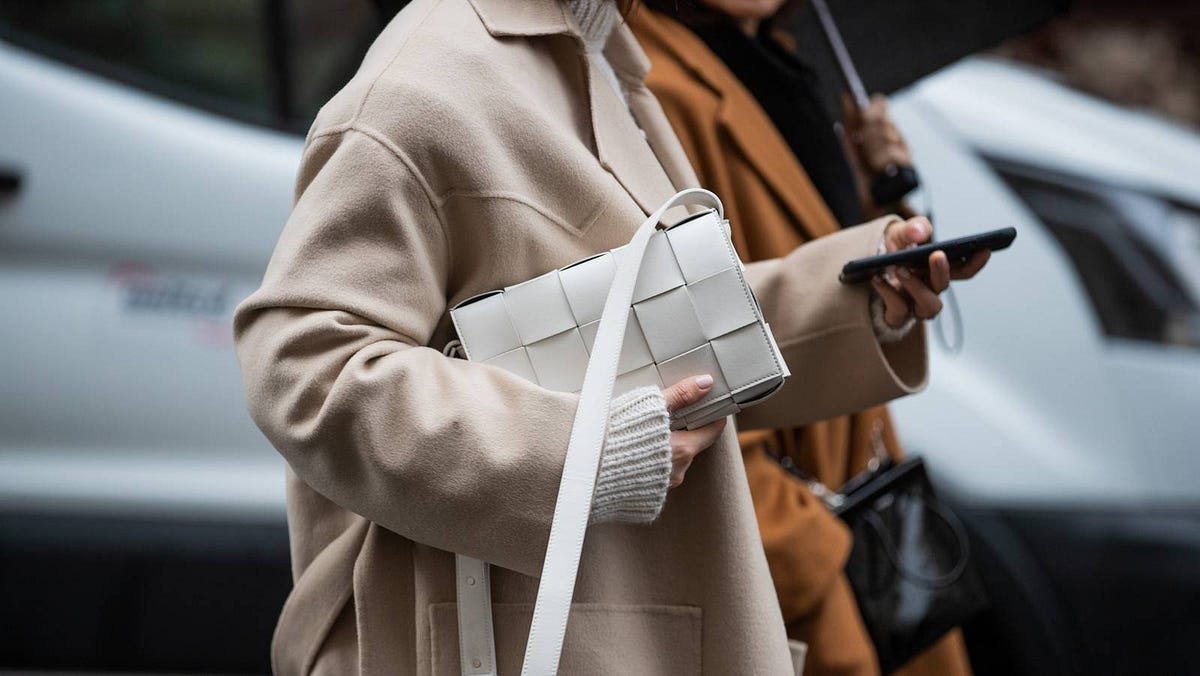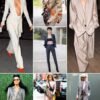5 Concepts to Help You Step Gently into ‘Quiet Luxury
An understated opulence is becoming the sought-after trait for many. Beyond the ostentatious display of wealth, “quiet luxury” holds more allure than we might imagine. For aficionados of high-end fashion, the purpose can be loosely divided into two: serving personal aesthetics and fulfilling the demands of social communication and status. Nowadays, the wealthy seem to feel they no longer need to broadcast their affluence to the world.
This mindset is encapsulated in the saying “Money talks, wealth whispers.” In 2023, the world of extravagance is beginning to embrace the term “quiet luxury.” We can interpret it as silent opulence, indicating a high-end fashion style that is serene, discreet, and less flamboyant. Instead of showcasing an array of logos or beautifully crafted designs that may be a bit overdone, the elite are returning to the roots of luxury – craftsmanship and premium materials.
To delve deeper into the realm of “quiet luxury,” let’s explore the following five concepts.
1. Logo-free Fashion
Logo-free fashion represents designs that steer clear of excessive logos, moving away from the trend of logomania. In 2021, the fashion world was captivated by Fendace, a collaboration between Versace and Fendi. However, logo-heavy designs seemed to lose their appeal, appearing overly ostentatious and quickly becoming outdated.
Today, logos are replaced by subtle details, like cleverly stitched seams or patterned logos subtly integrated into the fabric. The TV series Succession contributed to the rise of “quiet luxury,” showcasing a logo-free baseball cap worn by the character Kendall Roy. Surprisingly, this seemingly simple cap carries a hefty price tag of $605, belonging to the renowned Loro Piana brand associated with premium fabrics.

Hidden logos in CHANEL’s Spring/Summer 2023 collection | Source: Vogue
When discussing logo-free products, Muji’s model stands out. While not a luxury brand, Muji exemplifies the popularity of a logo-free concept. Shopping for Muji products provides a comfortable, enjoyable experience without the need to know the manufacturer. When making a purchase, customers savor the product rather than flaunting it.
This reflects the original purpose of luxury products: emphasizing craftsmanship, sophistication, spirit, and storytelling rather than borrowing a logo to feel superior. The spirit of luxury remains light, simple, and serene, focusing on passionate creativity and meticulous attention to detail rather than on noise and showiness.
2. Stealth Wealth
Stealth wealth, roughly translated as a lifestyle of wealth but discreet, focuses on individuals who prefer a quiet personal life, attracting minimal attention to avoid unnecessary scrutiny. The goal of this inconspicuous wealth is to prioritize financial freedom, personal happiness, and privacy. Instead of conspicuous displays of wealth, individuals adopting this lifestyle tend to concentrate on long-term financial goals such as investments, savings, and building sustainable wealth for a secure future.

Many wealthy individuals prefer not to disclose their wealth to the world | Source: That Bag These Shoe
The fashion style of this group leans towards a subtle elegance, avoiding flashy elements. It often incorporates classic looks reminiscent of “old-money” or “intellectual chic,” featuring specially designed coats, shirts, and trousers with neutral tones that can be worn on various occasions, transcending fleeting fashion trends.
Material selection is a crucial factor in expressing the sophistication of this “stealth wealth” community. Luxurious fabrics like cashmere, silk, and fine wool, combined with the skilled craftsmanship of designers, result in the creation of sophisticated pieces such as coats, tailored trousers, and t-shirts, along with other fashion accessories. Some popular brands associated with this style include Max Mara, Dries van Noten, Brunello Cucinelli, and Loro Piana.
3. Ultra-Rich
The ultra-rich are defined as individuals with a net worth of $30 million or more. Despite constituting only 1% of the global population, this elite group holds the potential to control over 20% of a country’s wealth.
The ultra-rich can be categorized into two groups: newly wealthy individuals and long-established wealthy families. While we often hear about self-made billionaires like Elon Musk or Jeff Bezos, their power and wealth pale in comparison to those of long-standing wealthy families. In South Korea, the term “chaebol” refers to massive family-controlled conglomerates dominating the economy, politics, and society, such as Samsung, LG, or Hyundai. Similarly, in the United States, the Walton family, founders of Walmart, possessed a net worth exceeding $247 billion by the end of 2020.

Lee Boo Jin, daughter of the chairman of the Samsung Group, is a female billionaire with an elegant fashion sense | Source: Saostar
Naturally, with immense wealth and power, the ultra-rich do not need to dress ostentatiously to showcase their affluence. Fashion psychologist Dion Terrelonge suggests that “quiet fashion” is favored by the ultra-rich because “It’s a way of saying who you are through what you wear, but not everyone can easily access this ‘vibe.’ Only those in the know understand that you’re wearing something prestigious.” It serves as a filtering mechanism, distancing those seeking wealth without the necessary foundations.
During the pandemic, the ultra-rich became a “savior,” explaining why the luxury industry continued to thrive despite the world facing stagnation. Milton Pedraza, founder of the Luxury Institute, notes that the ultra-rich account for up to 20% of the total customer base for luxury brands. The majority of revenue for these companies comes from these affluent customers, who are more resilient to economic downturns. As a result, luxury companies tend to experience a delayed decline compared to other industries.
4. Neutral Shades
Neutral shades, also described as earth-tone or woody-tone colors, encompass hues like black, brown, gray, and white. In sustainable fashion and particularly in “quiet fashion,” neutral tones are a top choice. While you may have heard about neutral colors, do you truly understand their “power”?
Firstly, from a psychological perspective, neutral tones evoke a sense of neutrality and balance. They are often considered unbiased colors, providing a backdrop that allows other colors or elements to stand out. This helps the affluent convey both their asserted position and the trustworthiness and credibility that they hold, while still making the observer feel unimposing.

Dior Couture collection with a neutral color palette | Source: Dior
Secondly, neutral tones fall into the category of timeless and classic colors. Every year, Pantone announces the color of the year, but neutral tones boast enduring vitality. They evoke a sense of sophistication and timelessness, particularly with powerful color combinations. For example, choosing a color to wear with a red or orange shirt can be exhausting, but having neutral tones in your wardrobe makes this decision much easier.
Lastly, neutral colors are the “kings” of relaxation and tranquility. Paired with “quiet luxury,” they form an inseparable duo. While luxury is often associated with bustling fashion weeks and noisy brand ambassador announcements, true luxury customers prefer a serene and calm lifestyle. In the luxury industry, privacy and safety are paramount, and neutral tones contribute significantly to this feeling.
5. Splashy Brands
To gain a deeper understanding of “quiet fashion,” it’s essential to explore the contrasting world of “splashy brands” – referring to brands with strong, vibrant personalities that leave a lasting impression. Through their use of colors and distinctive patterns or visually striking details, we can better comprehend the realm of serene luxury.
“Splashy brands” are where collections of clothing or accessories boast vibrant colors, unique patterns, or visually striking details. Some iconic names in this style include Diesel, Gucci, Balenciaga, among others. They are eye-catching and easily draw attention from those around. Even leading luxury fashion brands like Chanel or Dior incorporate “bold” designs to make a loud statement in public relations. It would be somewhat unfair to consider splashy as “less sophisticated” or incompatible with current tastes.

Sometimes even elegant brands can ‘overdo it’ | Source: Vogue
Moreover, the “quietness” of quiet fashion and the “noise” of splashy brands do not necessarily create conflict; instead, they can complement each other in various ways. Firstly, extravagant details can create interesting focal points for an otherwise simple outfit while maintaining elegance and sophistication. For instance, you can add interest by pairing a neutral-toned dress with a vibrant accessory like the LOEWE Balloon bag in red.

The combination of ‘quiet luxury’ and ‘splashy fashion’ | Source: Lyst
Additionally, the contrast between bold and subtle, between “serenity” and “movement,” can elevate your outfit. For example, combining a simple and elegant silk shirt with a sparkling strappy dress can give you a dynamic yet refined appearance.
However, it’s worth noting that recent collections from these “bold” fashion houses have also shown a tendency towards a more subdued approach. Jodi Kahn, Vice President of luxury fashion retailer Neiman Marcus, mentioned that brands like Loewe, Louis Vuitton, Miu Miu, and others have started transitioning towards more understated and discreet styles.


